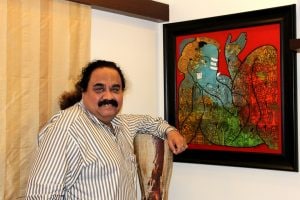Everyone’s telling stories, and that’s a problem
Summary
There’s long been a consensus that human beings are wired to be storytelling animals. We pick and choose aspects of the world and thread them together in a way that makes sense. Because we are primed to reach for patterns, goal-directed storytelling by those in power can have unfortunate consequences.
In a 2012 interview, Barack Obama remarked that not telling enough stories was the biggest mistake during his first few years as US president. The nature of the office, he went on to explain, “is also to tell a story to the American people, that gives them a sense of unity and purpose and optimism, especially during tough times.” As the 1928 Republican Party advertisement said, there was going to be a chicken in every pot and a car in every backyard.
Everyone is trying to tell stories nowadays. In his new book, Yale professor and Nobel Prize-winning economist Robert Shiller calls for “narrative economics”. By this he means an understanding of economic fluctuations by studying the dynamics of popular stories, “particularly those of human interest and emotion, and how these change through time.” In the same vein, Philip Lowe, head of Australia’s central bank, urged people at a recent economic symposium to communicate through stories that people can connect with, rather than talk in just numbers and coefficients.
In business, there’s a rash of articles and books on how the art of storytelling can make leaders more persuasive and brands more powerful. Most of these are filled with platitudes such as: “Stories resonate, generating creativity, interaction and transformation,” and “narrative champions freedom, interaction, and organic growth.” No doubt.
Unfortunate consequences
Politicians, of course, have also stepped up to the podium. Whether it’s reviving lost glories or achieving greatness, there’s an increasing reliance on narrative over facts. Populists tell stories about the nation, liberals point to individual rights, and unbelievers on both sides warn of propaganda.
There’s long been a consensus that human beings are wired to be storytelling animals. We pick and choose aspects of the world and thread them together in a way that makes sense. As Joan Didion so hauntingly writes in The White Album: “We tell ourselves stories in order to live…We interpret what we see, select the most workable of the multiple choices. We live entirely…by the imposition of a narrative line upon disparate images, by the ‘ideas’ with which we have learned to freeze the shifting phantasmagoria which is our actual experience.”
Because we are primed to reach for patterns, goal-directed storytelling by those in power can have unfortunate consequences. Monomyths of a perfect society – be it under capitalism or communism – leave us feeling out of place or let down when the present isn’t all that it’s cracked up to be. The inequality may be structural, but the responsibility is on the individual.
Extreme polarisation
Long-held stories can give rise to inappropriate policies. Take the neoclassical paradigm of homo economicus, the credo that human beings always act in a rational and efficient manner. Not quite true. There’s another familiar trope related to this. As Paul Kingsnorth puts it, “if you are a society that tells itself a story that human beings are separate from the rest of nature… then you end up with a relationship with the rest of the Earth and with the rest of life where you see both largely as material goods to be exploited.” The consequences of such thinking are all too clear.
Extreme polarisation is another outcome. We start to inhabit an us-versus-them world, divided into those who believe in the same stories, and those who subscribe to others. When identity is bound up in taking a larger story as gospel, there’s no middle ground. If you’re in the camp of Steven Pinker, you assert that we’re progressing and better off than ever; if you adhere to the views of John Gray, you feel that progress is just another illusion. Chances are, you aren’t invited to the same dinner parties.
Often, overarching stories follow templates of rags-to-riches, questing voyages, the overcoming of monsters, David vs Goliath, and other such age-old plots. These are powerful structures that provide meaning, but they rely on simplicity that borders on naiveté. What they erase are complexity and messiness. The world is not cut-and-dried; it’s stories that make it so. Social media amplifies this type of storytelling, and the brevity of the platforms edits out what doesn’t neatly fit in.
If you take professional writers – presumably a breed that knows a thing or two about telling stories – you’ll find that the best among them use knottiness, ambiguity and irony to tell their tales. In their work, there are often conflicting points of view, unreliable narrators, changes of character and circumstance. “The universe,” poet Muriel Rukeyser famously said, “is made of stories, not of atoms,” and the stories that best mirror the world are those that contain many whirling atoms, with positively and negatively charged protons, electrons and neutrons. Not a fixed and stable entity, after all.
We can’t get away from stories, but it’s best to be aware of the ones we believe in, with their attractions and their fallacies. Otherwise, we’re no more than puppets dancing to the movement of narrative threads held by those seeking to control us.
Sanjay Sipahimalani is a Mumbai-based writer and reviewer.
Read his columns here.

Elon Musk forms several ‘X Holdings’ companies to fund potential Twitter buyout
3 Mins Read
Thursday’s filing dispelled some doubts, though Musk still has work to do. He and his advisers will spend the coming days vetting potential investors for the equity portion of his offer, according to people familiar with the matter









 Listen to the Article
Listen to the Article  Daily Newsletter
Daily Newsletter










 In a free-wheeling conversation with me, she talked about the enterprise that will chronicle India’s culinary history and create a narrative for modern Indian cuisine.
In a free-wheeling conversation with me, she talked about the enterprise that will chronicle India’s culinary history and create a narrative for modern Indian cuisine.
 In Gaa, we have a four-faceted approach to Indian cuisine. We look at it through the prism of history, geography, religion and techniques. Some other chef may approach food through another prism. The point is to document, host conversations and create an entirely new paradigm. India is a very exciting place to be in when it comes to food. In our cities, we have so many home chefs who are keeping our regional cuisines alive, a phenomenon you don’t see anywhere else in the world.
In Gaa, we have a four-faceted approach to Indian cuisine. We look at it through the prism of history, geography, religion and techniques. Some other chef may approach food through another prism. The point is to document, host conversations and create an entirely new paradigm. India is a very exciting place to be in when it comes to food. In our cities, we have so many home chefs who are keeping our regional cuisines alive, a phenomenon you don’t see anywhere else in the world. I am passionate about the technique of negative food pairing. Dr Bagler has authored a paper on how Indian cuisine has the highest instances of negative pairings. At Gaa, we pair unusual flavours, textures and techniques. For instance, caviar and strawberry have only one flavour note in common, but we bring them together for a signature dish through a technique derived from Indian cuisine, by using fat as a medium.
I am passionate about the technique of negative food pairing. Dr Bagler has authored a paper on how Indian cuisine has the highest instances of negative pairings. At Gaa, we pair unusual flavours, textures and techniques. For instance, caviar and strawberry have only one flavour note in common, but we bring them together for a signature dish through a technique derived from Indian cuisine, by using fat as a medium.
 late last month, he launched Japan Made Easy (Harper Collins India, Rs 399). JME makes for a breezy read, as Goyal dives into Japanese aesthetics, culture, cuisine, and society and business, among others, and delivers sushi-sized observations on the country and its people.
late last month, he launched Japan Made Easy (Harper Collins India, Rs 399). JME makes for a breezy read, as Goyal dives into Japanese aesthetics, culture, cuisine, and society and business, among others, and delivers sushi-sized observations on the country and its people.